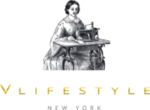Share This Article
The School of Athens (Italian: Scuola di Atene) is a fresco by the Italian Renaissance artist Raphael. It was painted between 1509 and 1511 as a part of Raphael’s commission from Pope Julius II in 1509 to decorate the rooms now known as the Stanze di Raffaello, in the Apostolic Palace in the Vatican.
The School of Athens is one of a group of four main frescoes on the walls of the Stanza della Segnatura that depict distinct branches of knowledge: Theology, Philosophy, Poetry (sometimes translated as Literature) and Justice. The School of Athens represents philosophy. It was the third painting to be finished there, after Theology on the opposite wall, and the Literature. The work is Raphael’s masterpiece and is a great example of the inspiring effect Renaissance works has had throughout the centuries. The painting is notable for its accurate perspective projection as well.
The scene takes place in classical times, as both the architecture and the garments indicate. Figures representing each subject that must be mastered in order to hold a true philosophic debate – astronomy, geometry, arithmetic, and solid geometry – are depicted in concrete form. The arbiters of this rule, the main figures, Plato and Aristotle, are shown in the centre, engaged in such a dialogue.
Raphael groups the solemn figures of thinkers and philosophers together in a large, grandiose architectural framework–characterized by a high dome, a vault with lacunar ceiling and pilasters. The figures who dominate the composition do not crowd the environment, nor are they suffocated by it. Rather, they underline the breadth and depth of the architectural structures. Plato, depicted with a white beard and some art critiques identify this solemn, wise-looking man with Leonardo da Vinci.
The painting celebrates classical thought. Grammar, Arithmetic and Music are personified by figures located in the foreground, at left. Geometry and Astronomy are personified by the figures in the foreground, at right. Behind them stand characters representing Rhetoric and Dialectic. Some of the ancient philosophers bear the features of Raphael’s contemporaries. For example, Bramante is shown as Euclid–Greek mathematician, often referred to as the “father of geometry”–in the foreground, at right, leaning over a tablet and holding a compass. Bramante was an Italian architect who introduced Renaissance architecture to Milan and the High Renaissance style to Rome, where his plan for St. Peter’s Basilica formed the basis of design executed by Michelangelo.

